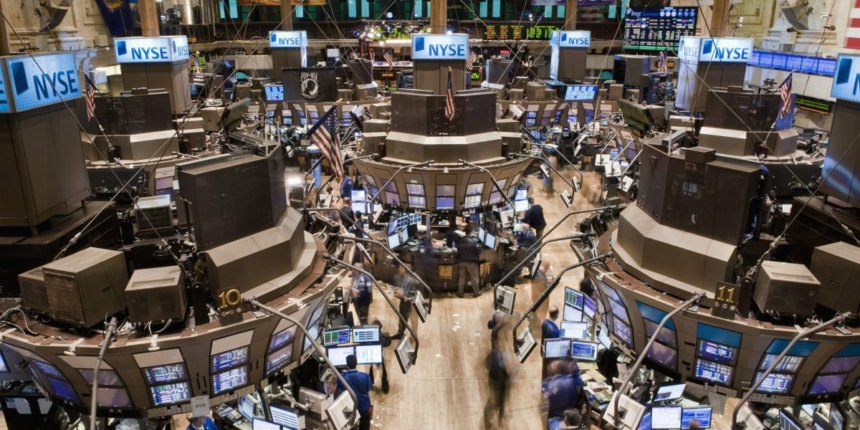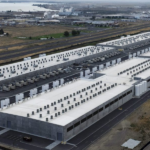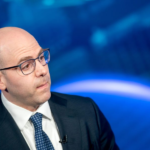Wall Street economists disagree on what’s behind a sharp slowdown in US job growth, highlighting a divide that is central to the broader outlook for the economy.
Some argue the pullback in hiring mostly reflects a smaller supply of workers, thanks in part to President Donald Trump’s immigration crackdown. Others say the slowdown is largely due to a more concerning retrenchment in demand.
The distinction is critical. If difficulty finding workers is the main factor, weak hiring trends probably aren’t foreshadowing wider layoffs, and the Federal Reserve can keep interest rates high. But if hiring is mostly slowing because of waning demand for labor, that would call for the central bank to intervene.
Those adjustments brought the pace of payroll growth down to just 35,000 on average over the last three months, the slowest since 2020. While the unemployment rate edged up to 4.2% in July, matching the highest level since 2021, it’s still not much different than where it’s been over the past year.
Analysts spent an unusual amount of time over the following week continuing to dissect the report. The Trump administration’s dramatic changes in trade and immigration policy this year have made the job of reading the labor market much more challenging, just as those shifts have raised the stakes for continued economic expansion.
Read More: Autopsy of a Black Swan — July’s Payroll Revisions
The Fed chief even suggested the so-called breakeven rate — the number of jobs the US economy needs to add each month to keep the unemployment rate stable — could be as low as zero, given what’s happening with immigration.
“We see little contradiction between slow employment growth and a low unemployment rate when the effects of immigration controls are taken into account,” Morgan Stanley economists led by Michael Gapen wrote in an Aug. 1 report following the release of the figures. Still, given how quickly hiring appears to be slowing, “it would not take much for us to alter our views,” they said.
Both sides marshaled various data points to support their analysis. The problem is nothing amid the plethora of statistics contained in the jobs report itself can definitively answer the question one way or the other.
The report does include a breakdown of foreign and native-born workers based on a survey of households, and the numbers indicate the foreign-born workforce and population has fallen by about a million over the last three months — a number administration officials were quick to seize on in touting their immigration policy achievements.
“Since the president took office, he created about 2.5 million jobs for Americans, whereas we’ve eliminated about a million jobs for foreign-born workers,” Stephen Miran, chair of the White House Council of Economic Advisers, said in an Aug. 1 CNN TV appearance.
But many analysts, including those at Bloomberg Economics, have written off the decline in the labor force, noting it is largely related to how the data are constructed. Many economists point to a simultaneous, implausible surge in the native-born workforce and population numbers.
“It’s not that we’ve suddenly given birth to a lot of 16-year-olds and boosted the native population,” said Jonathan Pingle, the chief US economist at UBS.
With the report’s demographic breakdown based on the household survey looking increasingly questionable, analysts are trying to focus more on what the data on hiring from a survey of businesses — the one that saw the big downward revisions for May and June — is saying.
The best way to do that is to come up with a list of industries most reliant on an immigrant workforce and try to estimate whether those are faring obviously worse. And different people are drawing different conclusions from essentially the same exercise.
Bank of America economists highlighted weak hiring in construction, manufacturing and leisure and hospitality, sectors where undocumented immigrants and those who are losing their legal status are more likely to be employed. Goldman Sachs economists, meanwhile, noted industries most reliant on immigration aren’t really seeing slower job growth than, say, those disproportionately exposed to tariffs.
The labor force participation rate has fallen 0.4 percentage point over the last three months, marking the biggest such drop in eight years, excluding the onset of the pandemic.
Those who see immigration as the culprit behind the hiring slowdown cite the drop in participation as an indicator of dwindling supply. Citi’s Clark said worsening demand conditions could be weighing on it too.
“Both of those issues would imply labor supply falling this year — slowing immigration and weak demand, as labor force participation typically falls in downturns,” Clark said. “But if weak demand is the more overwhelming force, it won’t be enough to keep the unemployment rate from rising.”







